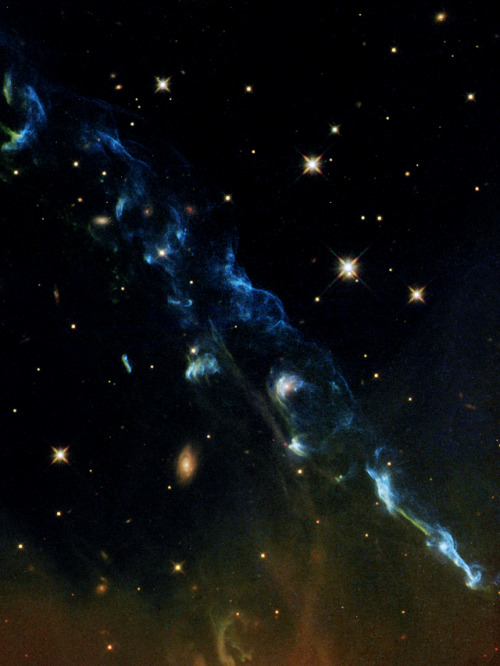No Better Time Than Time Spent With My Girls.

No better time than time spent with my girls.
More Posts from Nyxs-knight and Others

This is Omega Centauri - the largest globular cluster in the Milky Way! 🌟🌟🌟
It has nearly 10 million stars and some scientists believe that it may have formed as a remnant of a disrupted dwarf galaxy! Strange… 🤔🤔🤔
Taken by me (Michelle Park) using the Slooh Chile One telescope on August 11th, 2020 at 00:07 UTC.

The tails of Comet NEOWISE!! Comet’s usually have 2 tails that always point away from the Sun.
Here, NEOWISE’s blue ion tail on the left points directly away from the Sun and is pushed out by the flowing and charged solar wind. Structure in the ion tail comes from different rates of expelled blue-glowing ions from the comet's nucleus, as well as the always changing structure of our Sun's wind.
The other tail, the dust tail, is pushed out by sunlight, but curves towards its orbital path as heavier dust particles are better able to resist this light pressure. Comet NEOWISE's (Comet C/2020 F3) impressive dust-tail striations are not fully understood, as yet, but likely related to rotating streams of sun-reflecting grit liberated by melting ice on its 5-kilometer wide nucleus. Image Credit & Copyright: Zixuan Lin (Beijing Normal U.)

NGC 4622 The Backwards Galaxy
Standard theory holds that spiral galaxies generally have arms that trail behind the spin of the galaxy, rather like a Catherine wheel firework.

Then there is NGC 4622 which doesn’t, with arms that seem to lead rather than trail the spiral rotation.
Modelling suggests it’s most likely the outcome of an impact, but still remains a matter of conjecture and interest by astronomers.
The galaxy is located in the Southern Sky, in the constellation of Centauri and is 111 million light years from us.
if you’re butch in public you’re showing kids what kind of woman they can be. you’re a marvel and an open door. you are something they might have thought was impossible. you are the proof little butch girls need that they can exist grown up and happy and handsome without changing a single thing
Girls with muscles is so attractive and anyone who says less don’t know shit

Herbig-Haro 110, a geyser of hot gas flowing from a newborn star
Image credit: NASA/ESA & Hubble
Magnetic monster NGC 1275

This stunning image of NGC 1275 was taken using the NASA/ESA Hubble Space Telescope’s Advanced Camera for Surveys in July and August 2006. It provides amazing detail and resolution of the fragile filamentary structures, which show up as a reddish lacy structure surrounding the central bright galaxy NGC 1275. These filaments are cool despite being surrounded by gas that is around 55 million degrees Celsius hot. They are suspended in a magnetic field which maintains their structure and demonstrates how energy from the central black hole is transferred to the surrounding gas.
By observing the filamentary structure, astronomers were, for the first time, able to estimate the magnetic field’s strength. Using this information they demonstrated how the extragalactic magnetic fields have maintained the structure of the filaments against collapse caused by either gravitational forces or the violence of the surrounding cluster during their 100-million-year lifetime.
This is the first time astronomers have been able to differentiate the individual threads making up such filaments to this degree. Astonishingly, they distinguished threads a mere 200 light-years across. By contrast, the filaments seen here can be a gaping 200 000 light-years long. The entire image is approximately 260 000 light-years across.
Also seen in the image are impressive lanes of dust from a separate spiral galaxy. It lies partly in front of the giant elliptical central cluster galaxy and has been completed disrupted by the tidal gravitational forces within the galaxy cluster. Several striking filaments of blue newborn stars are seen crossing the image.
Credit:
NASA, ESA and Andy Fabian (University of Cambridge, UK)
-
 f-white29 liked this · 4 years ago
f-white29 liked this · 4 years ago -
 nyxs-knight reblogged this · 4 years ago
nyxs-knight reblogged this · 4 years ago -
 nyxs-knight liked this · 4 years ago
nyxs-knight liked this · 4 years ago -
 fancy-tuesday liked this · 5 years ago
fancy-tuesday liked this · 5 years ago -
 soyjazmin liked this · 5 years ago
soyjazmin liked this · 5 years ago -
 theothersiiide liked this · 5 years ago
theothersiiide liked this · 5 years ago -
 proletariatspapi liked this · 5 years ago
proletariatspapi liked this · 5 years ago -
 1000tokeslater liked this · 5 years ago
1000tokeslater liked this · 5 years ago -
 fantasticycollectionypolice liked this · 5 years ago
fantasticycollectionypolice liked this · 5 years ago -
 mychemicalcrystal liked this · 5 years ago
mychemicalcrystal liked this · 5 years ago -
 princecharmant liked this · 5 years ago
princecharmant liked this · 5 years ago -
 lilla2010 reblogged this · 5 years ago
lilla2010 reblogged this · 5 years ago



